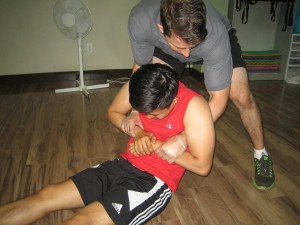Near drowning is the state where your body has run out of oxygen after being underwater for a prolonged amount of time. At this state, the body fails to supply oxygen to the other parts of the body which causes major systems to shut down. This happens faster in children however usually by a few seconds only but longer in adults. Drowning is one of the most common unintentional causes of deaths worldwide and can happen even if safety is very close, immediate first aid is required to save a person’s life from death.
Children are the most common victims of drowning, but everyone else can also be a victim of drowning.
There are numerous reasons and causes on why a person can have the near-drowning state, common causes are:
- Suicide attempt
- Under the influence of alcohol while swimming
- Panicking in the water
- Leaving children or babies unattended near bodies of water
Drowning is one of the most common unintentional causes of deaths worldwide and can happen even if safety is very close, immediate first aid is required to save a person’s life from death. - Receiving a concussion, stroke, or seizure while in water
Signs of near drowning
- Coughing
- Vomiting
- Skin discoloration to a bluish color
- Chest or abdominal pain
- Shortness of breath
Management
- Use life rings or ropes to assist the victim
- Move into the water if you have good swimming skills
- Know how to perform CPR carefully to avoid injuring the person
- Remove their wet clothes and cover the person with a warm cloth to prevent them from getting hypothermia
While most people survive after nearly drowning, it can still lead to health complications such as:
- Brain damage, which may lead to paralysis or a vegetative state
- Pneumonia
- An imbalance of chemicals and fluids in the body
These health complications may permanently affect the person and cause them difficulty in living after the incident. It is better to have safety measures to prevent drowning from happening, you can help stop by:
- Avoid drinking alcoholic drinks while swimming
- Learning how to swim
- Supervise your child in the bathtub
- Avoid running around by the edge of a swimming pool
- Have adequate first aid and lifeguard security at where you’re swimming
If you have rescued someone from drowning and there is another person on the scene, one must perform CPR while the other dials for emergency medical services.
More Information
The details posted on this page on near-drowning is for learning purposes only. To learn to assist an individual and how to provide first aid care, enroll in a first aid course with one of our training providers.
FACT CHECK
https://www.healthline.com/health/near-drowning

